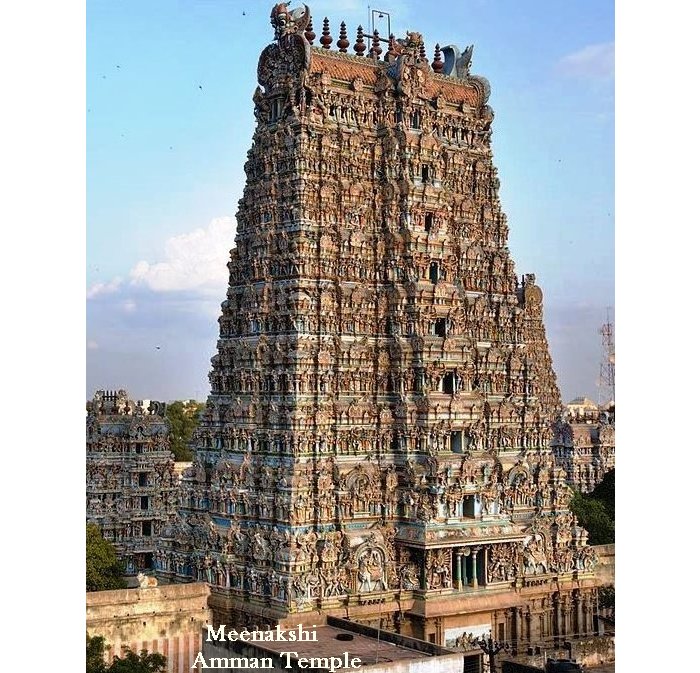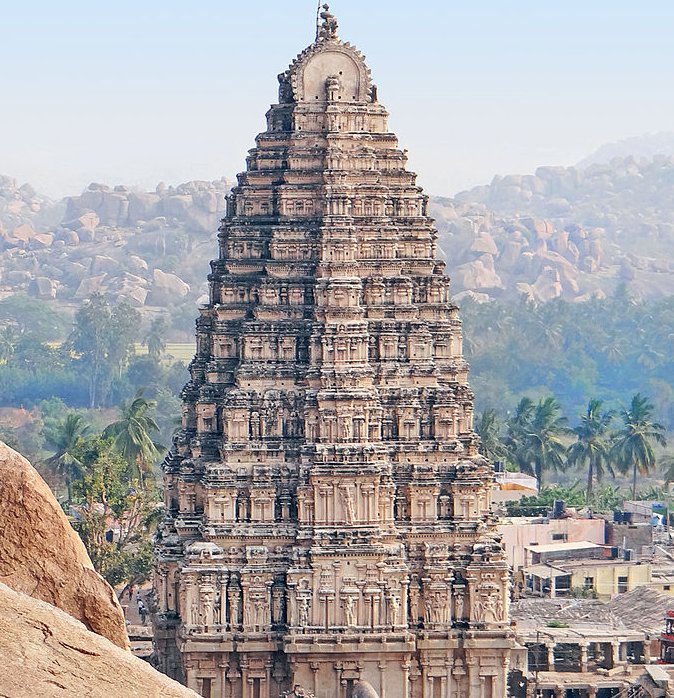Vimana Temples – Architectural Marvel Of India
A. Sutherland - AncientPages.com - Evidence of the engineering marvel of Indian architecture can be clearly seen in the country's temples.
However, it is not only about the work of ancient engineers of India. It is worth mentioning that Hindu cosmology shapes the temples’ form because "it recreates the universe and every person’s struggle, occurring over multiple lifetimes, to cast aside illusion in order to realize divine truth and oneness with an infinite god." 1
This temple is dedicated to the goddess Meenakshi who is the incarnation of the Hindu goddess Parvati.
Temples were built to house a sacred symbol of a particular god.
This structure is the mountain residence of the gods because according to Hindu cosmology, the gods have always been associated with mountains.
The temple’s overall form, dominated by its large central tower (vimana), reconstructs the appearance of god’s mountaintop dwelling.
All of these temples have beautiful, precise, and harmonious geometry and many of them are richly decorated with sculptures of gods, animals, flowers, erotic scenes, geometric patterns, and other figures bringing the memory of mythological episodes.
Virupaksha, a 7th century Hindu temple, is located in Hampi 350 km from Bangalore, in the state of Karnataka in southern India. source
Several temples of India have impressive, soaring towers ‘Gopuram' (or ‘Gopura’), usually ornate, at the entrance of any temple, especially in Southern India. Gopurams are the dominant architectural feature of a temple's outer appearance, sometimes soaring as high as 170 feet and completely overshadowing the main shrine and other structures of the temple, due to their colossal size.
The Early Cholas always built the vimana (tower) of the core temple sanctuary as the highest structure in the temple complex. Later, the Medieval Cholas began to build the gopurams even taller than the central sanctuary’s vimana towers.
This building style was continued and widely used by later Hindu dynasties.
In the Dravidian (or South Indian style), “the sanctuary and the superstructure together are called the vimana,” writes Thapar Bindia in his ‘Introduction to Indian Architecture". In architecture texts regarding this style, the vimana is described as a mountain-like spire of a free-standing temple.
“The most distinctive feature of the Dravidian style is the articulation of the vimana, a composite of the garbha griha and superstructure or spire (shikhara) which is a trapezoidal structure, starting on a square base, and soaring up in a series of well-articulated stories called tala…”
(‘Shikhara’ means a dome-shaped crowning cap is located above the Vimana, while a Vimana resembles a stepped pyramid that rises up geometrically.
The towers symbolize power and connection between the human world on earth and the abode of gods and goddesses in the high heavens.
Written by – A. Sutherland - AncientPages.com Senior Staff Writer
Copyright © AncientPages.com All rights reserved. This material may not be published, broadcast, rewritten or redistributed in whole or part without the express written permission of AncientPages.com
Expand for referencesReferences:
- India Revealed: Hindu Temples of South India
Thapar, Bindia. Introduction to Indian Architecture
Approach Guides. India Revealed: Hindu Temples of South India
Suriya, Jothirlingam: The Indian Temple Guide
More From Ancient Pages
-
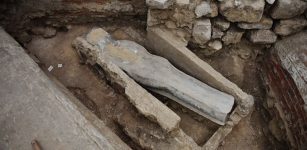 Mysterious Leaden Sarcophagus Found Under Notre Dame Will Be Opened
Archaeology | Apr 17, 2022
Mysterious Leaden Sarcophagus Found Under Notre Dame Will Be Opened
Archaeology | Apr 17, 2022 -
 Scientists Explore How Neanderthals Caught Birds In Caves For Food
Archaeology | Sep 16, 2021
Scientists Explore How Neanderthals Caught Birds In Caves For Food
Archaeology | Sep 16, 2021 -
 Extremely Rare Medieval Folding Chair Reveals Its Secrets
Archaeology | Oct 13, 2023
Extremely Rare Medieval Folding Chair Reveals Its Secrets
Archaeology | Oct 13, 2023 -
 Remarkably Well-Preserved 2,500-Year-Old Canoe Discovered In Swiss Lake
Archaeology | Sep 16, 2023
Remarkably Well-Preserved 2,500-Year-Old Canoe Discovered In Swiss Lake
Archaeology | Sep 16, 2023 -
 New Path For Early Human Migrations Contradicts A Single ‘Out Of Africa’ Theory
Evolution | Oct 5, 2023
New Path For Early Human Migrations Contradicts A Single ‘Out Of Africa’ Theory
Evolution | Oct 5, 2023 -
 2,000-Year-Old Celtic Dice Discovered In Poland
Archaeology | Oct 11, 2023
2,000-Year-Old Celtic Dice Discovered In Poland
Archaeology | Oct 11, 2023 -
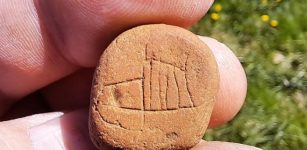 Small Stone Carved With A Viking Ship May Be Oldest Picture Ever Found In Iceland
Archaeology | Jun 16, 2023
Small Stone Carved With A Viking Ship May Be Oldest Picture Ever Found In Iceland
Archaeology | Jun 16, 2023 -
 Ancient Egyptian Men Used Eye Makeup For Many Reasons
Ancient History Facts | May 9, 2016
Ancient Egyptian Men Used Eye Makeup For Many Reasons
Ancient History Facts | May 9, 2016 -
 Roman Herculaneum: Men And Women Had Different Diets – New Study
Archaeology | Aug 26, 2021
Roman Herculaneum: Men And Women Had Different Diets – New Study
Archaeology | Aug 26, 2021 -
 New Inscriptions, Gold And Paint Showed Thanks To Restoration In Temple Of Edfu
Archaeology | Sep 20, 2024
New Inscriptions, Gold And Paint Showed Thanks To Restoration In Temple Of Edfu
Archaeology | Sep 20, 2024 -
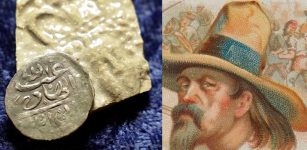 Can This Ancient Coin Solve The Mysterious Disappearance Of Pirate Henry Every?
Archaeology | Apr 1, 2021
Can This Ancient Coin Solve The Mysterious Disappearance Of Pirate Henry Every?
Archaeology | Apr 1, 2021 -
 Noppera-bo: Odd Intimidating Human-Like Faceless Yokai In Japanese Folklore
Japanese Mythology | Jul 23, 2024
Noppera-bo: Odd Intimidating Human-Like Faceless Yokai In Japanese Folklore
Japanese Mythology | Jul 23, 2024 -
 On This Day In History: First Wireless Transmission Of Morse Signals Sent – On Mar 12, 1896
News | Mar 12, 2017
On This Day In History: First Wireless Transmission Of Morse Signals Sent – On Mar 12, 1896
News | Mar 12, 2017 -
 On This Day In History: Storming Of The Paris Fortress – Prison Bastille – On July 14, 1789
News | Jul 14, 2016
On This Day In History: Storming Of The Paris Fortress – Prison Bastille – On July 14, 1789
News | Jul 14, 2016 -
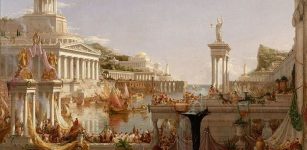 Mediterranean Sea Was Hotter 2,000 Years Ago And Contributed To The Fall Of The Roman Empire
Archaeology | Jul 27, 2020
Mediterranean Sea Was Hotter 2,000 Years Ago And Contributed To The Fall Of The Roman Empire
Archaeology | Jul 27, 2020 -
 Huge Subterranean Pre-Columbian Shaft Tombs In Tierradentro, Colombia
Featured Stories | Apr 28, 2021
Huge Subterranean Pre-Columbian Shaft Tombs In Tierradentro, Colombia
Featured Stories | Apr 28, 2021 -
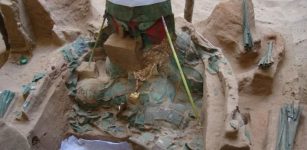 Tomb Of A 1,000-Year-Old Sican Surgeon Wearing A Golden Mask Discovered In Peru
Archaeology | Mar 30, 2022
Tomb Of A 1,000-Year-Old Sican Surgeon Wearing A Golden Mask Discovered In Peru
Archaeology | Mar 30, 2022 -
 How Greenland Got The ‘Wrong’ Name Thanks To Viking Erik The Red
Ancient History Facts | Mar 21, 2017
How Greenland Got The ‘Wrong’ Name Thanks To Viking Erik The Red
Ancient History Facts | Mar 21, 2017 -
 Unraveling The Mystery Why Experienced Norse Sailors Feared The Oceans And Seas
Myths & Legends | Oct 8, 2024
Unraveling The Mystery Why Experienced Norse Sailors Feared The Oceans And Seas
Myths & Legends | Oct 8, 2024 -
 Ancient Site Tres Zapotes Offers Evidence The Olmecs Practiced Shared Governance
Archaeology | May 30, 2017
Ancient Site Tres Zapotes Offers Evidence The Olmecs Practiced Shared Governance
Archaeology | May 30, 2017

